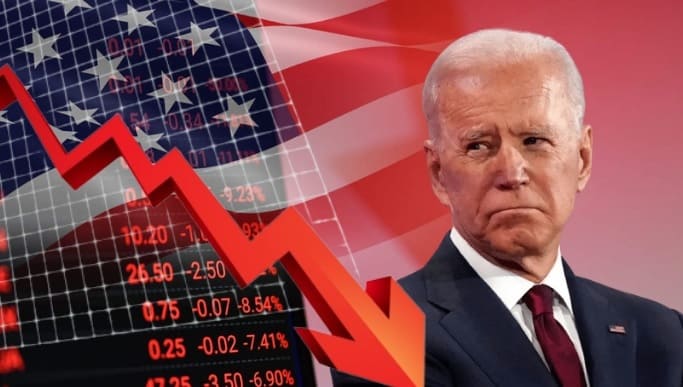A recession was previously widely believed to be inevitable, but stronger-than-expected economic data has prompted some on Wall Street to delay, or even withdraw, their predictions of one.
The Treasury yield curve, however, is one recession indicator that is still flashing a code red warning on the US economy.
Since World War II, every recession has been predicted by the inverted yield curve indicator, which happens when the yield on three-month Treasury bills is higher than the yield on 10-year notes.
Even though the economic narrative has recently shifted in favour of optimism, the recession that the theory’s creator, Canadian economist and Duke professor Campbell Harvey, still believes is imminent. Harvey told Yahoo Finance, “It’s way too early to say this is a false signal.” It’s “way too early.”
Investors have long regarded an inverted yield curve as a harbinger of an impending economic slump as a result of Harvey’s study.
Some people look for signals of an inverted yield curve by monitoring the difference between two-year and 10-year Treasury notes. Harvey’s definition, however, makes use of the gap between three-month bills and 10-year notes, which last turned negative in November 2022, nine months ago.
According to Harvey’s analysis, there has been an average delay of 11 months between the inversion of the yield curve and the beginning of the last eight US recessions. The average lead time throughout the previous four recessions was longer, at 13 months. Harvey predicts that a recession will likely start in early 2024 this time.
People begin to question the indicator as time passes after the inversion, which is acceptable. Added Harvey. I would describe it as the calm before the storm.
At the beginning of this year, many economists predicted a recession in 2023. However, that hasn’t happened, as the Federal Reserve staff recently joined the rising number of market participants who no longer believe that the US economy will experience a recession.
Part of this discussion has questioned whether the yield inversion is still a reliable indication.
Goldman Sachs chief economist Jan Hatzius reduced the company’s likelihood of a recession in the next 12 months from 25% to 20% in a research paper titled “The Narrative Turns” published in July.
Hatzius cited stable economic indicators and declining inflation in addition to saying, “We don’t share the widespread concern about yield curve inversion.”
According to Hatzius, “the argument that the inverted curve validates the consensus forecast of a recession is, to put it mildly, circular.”
Harvey stated on LinkedIn in January that there were “reasons to believe” that the yield curve was “flashing a false signal.”
He highlighted that at the time, key elements of the stimulus-fueled, pandemic-era economy were still in effect. A strong consumer base, high labour demand, and a robust banking sector were all signs that the US may avoid a recession.
He wrote in early January, “The Fed is the main wildcard.” “I think the time has come to stop the tightening,”
Three significant banks ultimately failed as a result of a regional banking crisis. Due to this, large banks’ lending decreased in the second quarter, and it is anticipated that credit conditions would remain tight through the end of the year.
Harvey contends that this is a crucial factor in why the economic slump has not yet materialised. Although a historically low unemployment rate may be cited as evidence for the economy’s resilience, that statistic is a lagging indicator.
The yield-curve indicator should be seen as a portent of impending bad things.
Many people believe that recessions are somewhat triggered by [the yield-curve inversion], according to Liz Ann Sonders, chief investment strategist at Charles Schwab. “That’s not the best way to approach it, in my opinion. The circumstances that arise and lead to the inversion of the yield curve are eventually what lead to the economy’s decline as well.
Harvey and Sonders agreed that the yield-curve inversion itself puts banks in a difficult position.
Financial firms often lend long and take out short loans.
For many customers, the interest rate on a 30-year mortgage, which represents long-term money the bank lends to them, may be lower than the rate at which the customer gets paid for keeping cash in a high-yield savings account, which is money the bank is essentially paying the customer to borrow.
For instance, in the second quarter, deposit rates given by large banks like JPMorgan (JPM) and Wells Fargo (WFC) increased dramatically, driving up interest rates at these businesses.
The value of assets like mortgages and other long-term loans that may be held on a bank’s balance sheet is also under pressure from higher rates; investors became acutely aware of this dynamic following the failure of Silicon Valley Bank.
That limits lending, which in turn limits investment and the economy, according to Sonders.
In recent weeks, there have also been an increasing number of warnings about possible stress in the banking industry.
S&P Global lowered the bond ratings for numerous regional US banks on Monday. This came after Moody’s earlier this month rated 10 mid-sized institutions and a Fitch Ratings analyst warned that the entire industry might be lowered to A+ from AA-.

